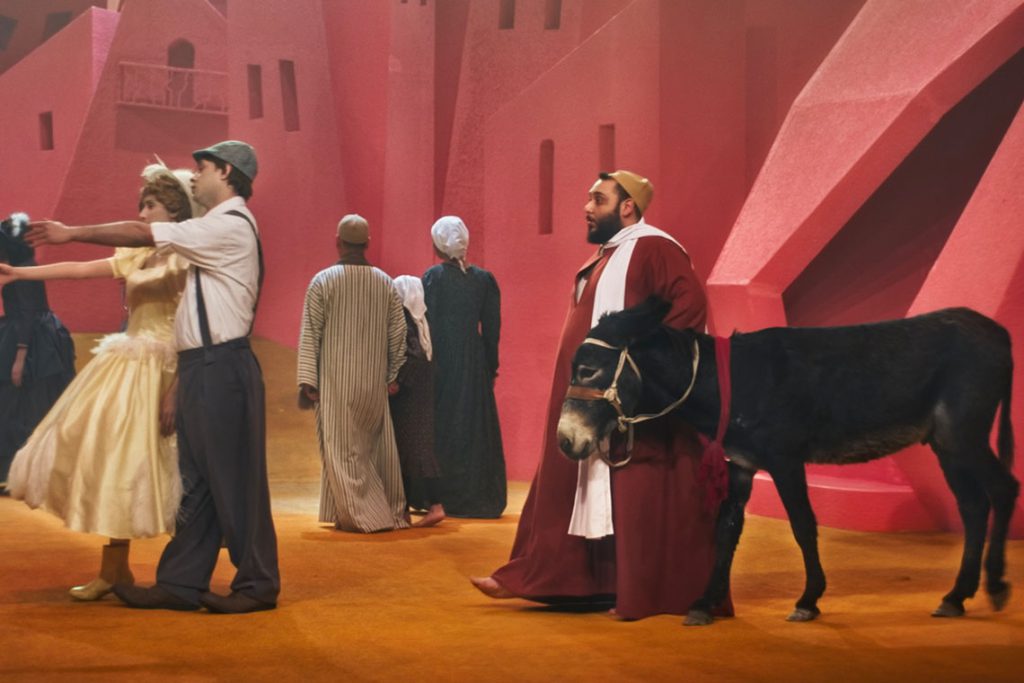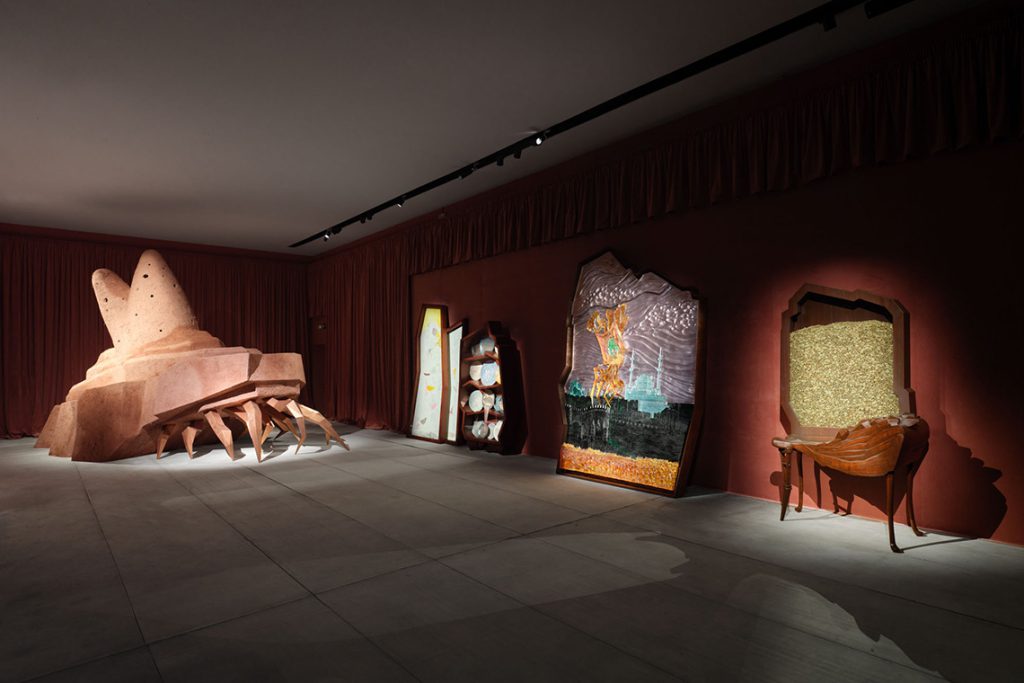The artist speaks about being the representative at the Egyptian Pavilion at this year’s Biennale, as well as his concurrent exhibition at the Museo di Palazzo Grimani (ended 30 June).
Canvas: What were your thoughts when you were selected to represent the Egyptian Pavilion at Venice this year?
Wael Shawky: Honestly, it took me some time to decide what I should do. In 2011 I decided that I wouldn’t show my work in Egypt, but this time it was different. There were lots of discussions with galleries and curators whom I know and trust, and we thought that this was a change that needed to happen. In the end, we were given full control over the pavilion and the sponsors have supported it. We only had five months and had to work very fast!
How do you view representing your country at its national pavilion?
It really is an amazing responsibility, because of everything that is happening in the world today, and especially in the Arab world. In 2011 there were such hopes across the region concerning democracy and human rights, but they weren’t fulfilled and for many countries the situation has actually worsened. So it’s really about the moment, and with what we see now in Gaza, or even in the USA, it seems that it’s time for people to start speaking up. It’s not possible to rely only on the regimes in power, because nothing changes. It has to come from the people. This responsibility is at the core of the pavilion and is based on the nationalist Urabi uprising of 1879–82, which was a reaction to growing imperial influence in Egypt. It culminated in a revolt, which was crushed by the British and led to their occupation of the country until 1956.

Image courtesy of the artist, Sfeir-Semler Gallery, Lisson Gallery, Lia Rumma and Barakat Contemporary
Hence the title of Drama 1882 for your pavilion presentation?
Yes, that’s what inspired this work in Venice. I often deal with sacred or historical texts, including novels. Not all of these are historical. Some are very surreal, like those by Mohamed Mustagab. This time it’s a little bit different, because I decided to work with an historical topic that reminded me of my series, Cabaret Crusades (2010–15). The challenge was really with how to turn the events of 1882 into a song for Venice, so I wrote the entire script and then composed it. So, we have the film that runs for almost 45 minutes and it’s just one big song!
The reason I make these types of films is to analyse history and try to see it from a different point of view. I always give the example of my work Telematch Sadat (2007), which is sort of a remake of the assassination of President Sadat in 1981. This film is almost taking the same position of the cameras that captured the real assassination, but this time I decided to make the entire film with kids. So instead of having the army caravan with tanks, I decided to have a camel caravan and donkeys carrying the kids, and so on. Just by making this shift, you can analyse the actual event, because after viewing it several times, the event loses its meaning. The visual change allows you the space to analyse the situation and appreciate the history differently.
However, this is exactly the gap that already exists in history, between what we think is a fact and what might be a myth. We never know if history is correct or not. It is written, so we take it and turn it into another digestible format, like a film, a song or a painting. There is always a space of uncertainty, however, which becomes myth and allows us to create this analysis. I love this about history, and that’s why it can be art, because history in the end is human creation.
Do you think that this gap between truth and myth is a valuable way of looking at our contemporary times?
Yes, absolutely. I think it’s a reflection of what is happening today. Instead of trying to be reductionist or reactionist and just look at, for example, ‘today’, I prefer to look back to 100 years ago, or 1000 years ago.You will find almost exactly the same patterns, the same cheating or the same way of worshipping power.
When did you start composing music and writing?
I think the first thing I composed was the music for an installation called The Green Land Circus (2005), almost 20 years ago! From there, I started to involve my music much more into every film, but honestly, I always feel that my films are musical. Music is an important part of it all, so I have to compose it myself. For Drama 1882, I wrote the script in classical Arabic. It is a very beautiful language and very difficult. The script has no rhymes because it’s a story, so to compose it as a song was very challenging. I liked this process, though. In the end, when it comes together, you feel something different, you hear something different. It doesn’t become a regular song because it’s information, but it seems more religious, similar to the way they chant the Qur’an or sermons inside a church, and how they put words next to each other in a melodic way.

Music is also a connection between the two works I am showing in Venice, Drama 1882 at the Egyptian Pavilion and I Am Hymns of the New Temples (2023) at Museo di Palazzo Grimani, but more of a link is the worship of power. In I Am Hymns, the story is about the creation of the universe, but from a Greek mythology point of view. We start from nothingness, silence, and then go on a journey until we reach the end with Zeus. He punishes people for their sins, but at a certain moment when it reaches the point beyond return, he decides to erase humanity with a flood and create new human beings. The main reason Zeus decided to do this was because humanity had started to worship power. This connects with the political climate in Egypt today.
What was the process of selecting participants for Drama 1882?
Oh, it was fantastic. Alexandria is thirsty to make art. There are lotsa of artists and creative people here in Egypt, but a lack of outlets and support. When I started to make this work in Alexandria, I found lots of young people who have this desire to become actors or dancers and they are already practicing, but in very limited ways. So when it came to making this film, they really collaborated with their hearts. We had an amazing location in the Mohamed Abdel Wahab Theatre and we made the entire film there – the cinematography, all of the costumes, rehearsals – everything went on inside this theatre. We worked with almost 130 performers.
Do you ever work with the same actors in your films?
No, I always work in different countries. Actually, this is the first time, for a long time now, that I’ve made a film in Egypt. The last time was in 2016! This is also the first time I’ve worked with adults. I usually work with kids or marionettes, or inverted images so that faces don’t appear. I always like to work this way to erase the drama and not show any acting skills. I don’t like acting or drama, so I usually work with kids because they don’t know the historical references. They will never try to reflect the emotions of the scene, for example. Even with the assassination of President Sadat in my film Telematch Sadat, as they didn’t know who Sadat was it was easy to ask them to jump or move in certain ways without understanding the context.
This time, because I called it Drama 1882, I decided to work with adults. It’s a challenge, as this is the first time that I’ve worked with adults where their faces appear. Of course, I told them not to act, and they don’t as far as possible, but there is still drama in it.
This interview first appeared in Canvas 113: Common Threads
The 60th International Art Exhibition – La Biennale di Venezia runs until 24 November 2024



